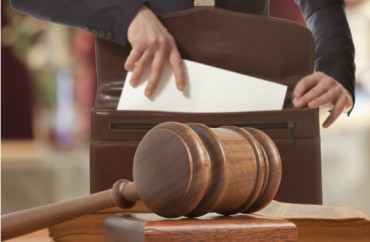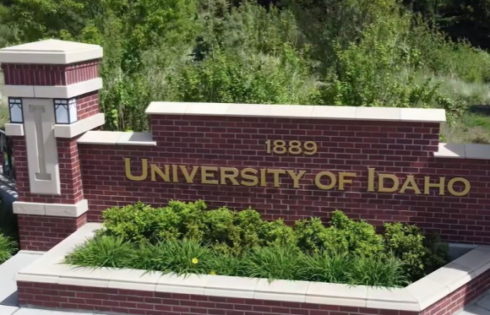
And judges have rejected more than 60 motions to dismiss
This summer has featured a string of bad court rulings for colleges that are being sued by students who were found responsible for sexual misconduct in campus proceedings.
Judges seem increasingly convinced that colleges are hiding or ignoring evidence, preventing accused students from cross-examining witnesses and not following their own rules in their zeal to avoid bad publicity from the accuser-friendly Department of Education, among other violations.
According to Brooklyn College’s KC Johnson, co-author of The Campus Rape Frenzy and diligent tracker of litigation against universities, 61 schools as of Friday have lost motions to dismiss due process or Title IX claims brought by accused students.
Now a law firm is looking to cash in on these unfavorable trends for colleges by publishing a “special report” that shows colleges their bleak legal outlook if they don’t reform their Title IX investigations and adjudications so accused students have a fighting chance.
Beware ‘partial denial, partial grant’
Proskauer Rose’s higher education practice did a quantitative analysis of 130 state and federal lawsuits by accused students, filed between January 2011 and December 2016.
That time period roughly corresponds with the “Dear Colleague” letter issued by the Department of Education in April 2011, which warned colleges they could lose federal funding if they didn’t use a low evidence standard and accuser-tilted practices in Title IX proceedings. (Education Secretary Betsy DeVos* is reportedly making a major announcement about “equal opportunity and equal protection” under Title IX this Thursday.)
The law firm report, dated Aug. 29, looks at the “legal claims that form the basis for the complaints, the principal allegations raised, including allegations of ‘mistakes’ made by institutions, and the reported outcomes.”
One surprise: Fully two in five sued colleges don’t bother filing a motion to dismiss. It’s not explained whether these schools reached out to the plaintiff after being served to negotiate a voluntary dismissal or the plaintiff yanks the suit for another reason, or both.
MORE: Cheaper for colleges to ‘believe the survivor’ than ensure due process
Of the motions to dismiss that are filed, more than a third are successful. But colleges should be worried by the runner-up category: “partial denial, partial grant” (25 percent).
This means at least one claim survives the motion to dismiss. Another 16 percent of motions are denied, meaning that two out of every five lawsuits continue in some form after the university tries to get them tossed. (In my experience reading this litigation for the past three years, gender-bias claims are often dismissed.)
About a quarter of colleges end up settling the litigation, but 47 percent may wish they had: That’s the percentage of litigation that was still ongoing as of June 10 this year.
Many of these colleges have probably spent more in legal fees than they would have given to plaintiffs to settle, and the longer these cases continue, the more potentially embarrassing information can come out in discovery.
Suspensions and expulsions are legally risky
Unsurprisingly, most of the 130 lawsuits allege that alcohol or drug use was involved in the encounter(s) between accuser and accused.
Colleges have used the presence of such intoxicants to justify punishing accused students if their accusers had anything to drink, while hypocritically holding the accused responsible for their own intoxicated behavior. They have also ignored witness testimony or surveillance video that show accusers walking and acting normally in the runup to the disputed encounter.
Lawsuits are far more common by students who were suspended (44 percent) or expelled (42 percent), suggesting that colleges can protect themselves legally by meting out lesser punishments. They risk harsh publicity from accusers-rights groups and the media for this, however.
“Failures” in the investigation (47 percent) or hearing (46 percent) that are not related to gender bias are the most common “mistakes” allegedly made by schools. The report cites “evidentiary issues, failure to follow hearing protocol, [and] impartiality of hearing board members” as hearing failures.
MORE: What exactly did Candice Jackson say about ’90 percent’ of rape claims?
Also not uncommon: gender-bias evidence (15 percent), “improper use or exclusion of witness testimony” (12 percent) and poor training of school personnel (11.5 percent).
Nearly two-thirds of the cases allege reverse-discrimination Title IX claims, closely followed by breach of contract (61.5 percent), which likely includes schools that judge students on sexual consent policies that took effect after the disputed encounters. Due process and negligence claims are each only present in about two in five cases.
The Proskauer Rose report closes with a checklist for colleges to give themselves, including an internal audit that identifies and guards against common mistakes in investigations and adjudications and a process for staying up to date on court rulings.
It’s telling that the law firm thought it needed to explicitly state the most basic self-examination question: Are colleges’ policies and practices “balanced, transparent and sensitive to both parties’ educational rights?”
MORE: Colleges spent $60 million to resolve rape complaints
MORE: Law prof pitches anti-rape plan to DeVos: Outsource investigations
Like The College Fix on Facebook / Follow us on Twitter
IMAGE: Shutterstock






Please join the conversation about our stories on Facebook, Twitter, Instagram, Reddit, MeWe, Rumble, Gab, Minds and Gettr.